Mark Richardson
Active Member
In the summer of 1967, riots consumed many US cities including Detroit, which suffered terrible loss of life and property. Bearcat Motors location was at the center of the devastation in the Linwood neighborhood in Detroit but did not suffer significant property damage due to their well-known generosity and kindness to the neighborhood. Records show this turned out to be yet another blow to the dealership because there would be no insurance dollars or targeted loans available to Bearcat to keep the business going in the riot torn neighborhood.
In early 1968, Barakat saw that Amphicar Corporation was not able to supply cars and he tried to expand into other makes & models to become a distributor and dealer for them in the Detroit and Michigan region. A change like this would require a new business strategy and the concept was created by Bearcat to become “The Supermarket for Individualists”. Any adventure seeking outdoors lovers could turn to Bearcat for all sorts and types of outdoor related vehicles.
A flurry of inquiries was sent out to car companies such as Volvo, Lotus, BMW, Volkswagen, Toyota, Renault, AMC, Kaiser Jeep, Fiat, Citroen, Maserati, and King Midget. He also courted manufacturers of smaller vehicles such as Scatmobile, Amphicat, Jiger, Sea Jeep, Snowcars, Swamp Buggies, and luxury brands such a Duesenberg, Cord, Stutz, and Excalibur.
The adventure vehicle expansion would also include the booming camper market and inquiries would be sent out to the Tripper Car Camper company and Clark Cortez Motor Homes to become a franchise. Also, others such as snowmobile maker Johnson Skee Horse, Hydrofoil Water Spyder, Hydro-Mite Sport Boats, and even a folding bicycle manufacturer were contacted.
All of these makes and models would be invited to send a sample vehicle to the 1968 Detroit Auto Show to display and possible generate orders and establish the dealer partnership with each company. It is not known if any attended, but responses to inquiries were lukewarm at best.
Barakat applied for a new round of funding from the Small Business Administration to capitalize this new strategic direction now that the supply of Amphicars had ceased. The loans were denied, and the lease of the building lapsed. Sadly, Bearcat motors was officially bankrupt and no longer in business only a year after beginning. Barakat gave the business a valiant effort as an Amphicar dealership, but it was doomed from the start by the fact that the cars he was trying to sell as new were 5 or more years old, Amphicar Corporation and Ranchero Motors were in deep financial trouble, and regulations dooming the current models were only a year away from becoming law.
Bearcat Motors never really had a chance to succeed by exclusively selling Amphicars alone. All the time, effort, and financial resources enthusiastically invested initially were never going to make the business profitable. All the promotions and publicity generated were not driving buyers to the dealership in the numbers necessary to sell enough cars to make a profit. The issues Bearcat had with Ranchero Motors made the franchise change from an exciting opportunity to a mire of troubling issues in only 2 months in business, and before selling the first car! As sales began, trouble with the cars soon cropped up. The cars would break down in days or weeks only to find their way back to the dealership for warranty repairs. Barakat complained to Flinn about the quality issues with the cars in a letter that the cars were poorly engineered and unreliable. Barakat would never require owners to pay for labor as stated in the factory warranty because he knew the deplorable condition of the cars when he sold them as new. So, having to recondition 5-year-old cars to sell them as new only then have them return again and again for warranty repairs made the business lose more and more money for each car sold. This certainly was not a viable business model or one that could be sustained for long financially.
In hindsight, Barakat might have been better off to purchase a few cars from Ranchero and sell them as people asked about his personal car. Had he known the financial condition of Amphicar Corporation then, the fact that Amphicar stopped production 5 years earlier and there would be no 1968 model, and societal upheaval in the form of devastating riots in the city would occur he never would have opened a dealership, but then we would not have such an interesting history to read about and the remaining Bearcat cars to enjoy today.
Copy this URL into your browser to see the video.
tinyurl.com/Bearcat-Showroom
There is a short clip converted from 16mm film to digital and hosted on YouTube by Dan Gibson from Katestrackshack.com which shows cars, employees, the showroom, and Hugh Prescott showing off the famous Bearcat car with bow railing and fighting chair on the back. This is incredible that it exists today and we are extremely lucky to be able to see it for the first time in more than 50 years.
In early 1968, Barakat saw that Amphicar Corporation was not able to supply cars and he tried to expand into other makes & models to become a distributor and dealer for them in the Detroit and Michigan region. A change like this would require a new business strategy and the concept was created by Bearcat to become “The Supermarket for Individualists”. Any adventure seeking outdoors lovers could turn to Bearcat for all sorts and types of outdoor related vehicles.
A flurry of inquiries was sent out to car companies such as Volvo, Lotus, BMW, Volkswagen, Toyota, Renault, AMC, Kaiser Jeep, Fiat, Citroen, Maserati, and King Midget. He also courted manufacturers of smaller vehicles such as Scatmobile, Amphicat, Jiger, Sea Jeep, Snowcars, Swamp Buggies, and luxury brands such a Duesenberg, Cord, Stutz, and Excalibur.
The adventure vehicle expansion would also include the booming camper market and inquiries would be sent out to the Tripper Car Camper company and Clark Cortez Motor Homes to become a franchise. Also, others such as snowmobile maker Johnson Skee Horse, Hydrofoil Water Spyder, Hydro-Mite Sport Boats, and even a folding bicycle manufacturer were contacted.
All of these makes and models would be invited to send a sample vehicle to the 1968 Detroit Auto Show to display and possible generate orders and establish the dealer partnership with each company. It is not known if any attended, but responses to inquiries were lukewarm at best.
Barakat applied for a new round of funding from the Small Business Administration to capitalize this new strategic direction now that the supply of Amphicars had ceased. The loans were denied, and the lease of the building lapsed. Sadly, Bearcat motors was officially bankrupt and no longer in business only a year after beginning. Barakat gave the business a valiant effort as an Amphicar dealership, but it was doomed from the start by the fact that the cars he was trying to sell as new were 5 or more years old, Amphicar Corporation and Ranchero Motors were in deep financial trouble, and regulations dooming the current models were only a year away from becoming law.
Bearcat Motors never really had a chance to succeed by exclusively selling Amphicars alone. All the time, effort, and financial resources enthusiastically invested initially were never going to make the business profitable. All the promotions and publicity generated were not driving buyers to the dealership in the numbers necessary to sell enough cars to make a profit. The issues Bearcat had with Ranchero Motors made the franchise change from an exciting opportunity to a mire of troubling issues in only 2 months in business, and before selling the first car! As sales began, trouble with the cars soon cropped up. The cars would break down in days or weeks only to find their way back to the dealership for warranty repairs. Barakat complained to Flinn about the quality issues with the cars in a letter that the cars were poorly engineered and unreliable. Barakat would never require owners to pay for labor as stated in the factory warranty because he knew the deplorable condition of the cars when he sold them as new. So, having to recondition 5-year-old cars to sell them as new only then have them return again and again for warranty repairs made the business lose more and more money for each car sold. This certainly was not a viable business model or one that could be sustained for long financially.
In hindsight, Barakat might have been better off to purchase a few cars from Ranchero and sell them as people asked about his personal car. Had he known the financial condition of Amphicar Corporation then, the fact that Amphicar stopped production 5 years earlier and there would be no 1968 model, and societal upheaval in the form of devastating riots in the city would occur he never would have opened a dealership, but then we would not have such an interesting history to read about and the remaining Bearcat cars to enjoy today.
Copy this URL into your browser to see the video.
tinyurl.com/Bearcat-Showroom
There is a short clip converted from 16mm film to digital and hosted on YouTube by Dan Gibson from Katestrackshack.com which shows cars, employees, the showroom, and Hugh Prescott showing off the famous Bearcat car with bow railing and fighting chair on the back. This is incredible that it exists today and we are extremely lucky to be able to see it for the first time in more than 50 years.
Attachments
-
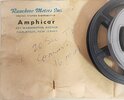 16mm Film.jpg692.6 KB · Views: 16
16mm Film.jpg692.6 KB · Views: 16 -
 99 9 10 percent.jpg1.5 MB · Views: 10
99 9 10 percent.jpg1.5 MB · Views: 10 -
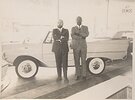 20230911_120347.jpg288 KB · Views: 10
20230911_120347.jpg288 KB · Views: 10 -
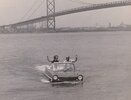 Bearcat Bridge.jpg719.3 KB · Views: 10
Bearcat Bridge.jpg719.3 KB · Views: 10 -
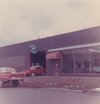 Bearcat dealer color.jpg92.6 KB · Views: 10
Bearcat dealer color.jpg92.6 KB · Views: 10 -
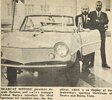 Bearcat Newspaper Photo.jpg1.6 MB · Views: 10
Bearcat Newspaper Photo.jpg1.6 MB · Views: 10 -
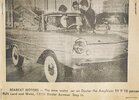 Bearcat Newspaper Photo2.jpg999.8 KB · Views: 10
Bearcat Newspaper Photo2.jpg999.8 KB · Views: 10 -
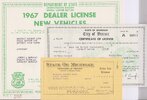 Bearcat Sales License.jpg1 MB · Views: 11
Bearcat Sales License.jpg1 MB · Views: 11
Last edited:



